Table of Contents
Introduction
If your dog can’t stop itching, licking, or scratching day and night, you’re not alone. I’ve seen countless families in my clinic worried and frustrated by the relentless discomfort of atopic dermatitis. The good news? With the right strategy, canine atopic dermatitis management can become not only effective but also sustainable long-term.
This guide is built on years of hands-on experience and supported by peer-reviewed studies. Whether you’re just beginning this journey or reassessing your dog’s current plan, we’ll walk through proven steps from barrier repair and anti-inflammatories to immunotherapy and home care.
Medical Disclaimer: This article is for informational purposes only and does not replace professional veterinary advice. Always consult your veterinarian for diagnosis and treatment tailored to your pet.
🐾 Key Takeaways
- Canine atopic dermatitis management is a lifelong process that requires a multifaceted, science-backed approach.
- Early intervention with topical therapies, proactive anti-inflammatory sprays, and appropriate systemic medications can significantly improve outcomes.
- Allergen-specific immunotherapy (ASIT) is currently the only disease-modifying treatment for long-term control.
- Routine bathing, lipid barrier repair, and nutritional support (e.g., omega-3/6 fatty acids) play essential maintenance roles.
- Owner consistency, regular veterinary rechecks, and a tailored plan help reduce flares, infection risk, and medication reliance over time.
What Is Canine Atopic Dermatitis?

Canine atopic dermatitis (cAD) is a chronic, inflammatory skin disease caused by a genetic tendency to develop allergic reactions to environmental substances, like pollen, dust mites, or mould spores. It affects approximately 20–30% of dogs, often beginning between 6 months and 3 years of age (MDPI).Dog Products & Reviews
Common Symptoms
- Persistent itching and scratching
- Red, inflamed skin (especially paws, ears, armpits, and groin)
- Chronic ear infections
- Licking, chewing, or rubbing
- Skin thickening and hair loss over time
These symptoms often worsen with seasonal changes, but for many dogs, they’re year-round, necessitating thoughtful, proactive canine atopic dermatitis management.
Breeds at Higher Risk
Breeds like West Highland White Terriers, French Bulldogs, Labrador Retrievers, Boxers, and German Shepherds are genetically more susceptible. According to TIME, dogs from parents with cAD have up to a 65% risk of developing it themselves.
Diagnosing cAD: When to See a Vet
Diagnosis involves ruling out other causes (like fleas, food allergies, or mites), combined with clinical signs, history, and sometimes allergy testing. Veterinary diagnosis is crucial to avoid unnecessary or ineffective treatments and to begin proper long-term canine atopic dermatitis management.
1. Understand the Root Cause
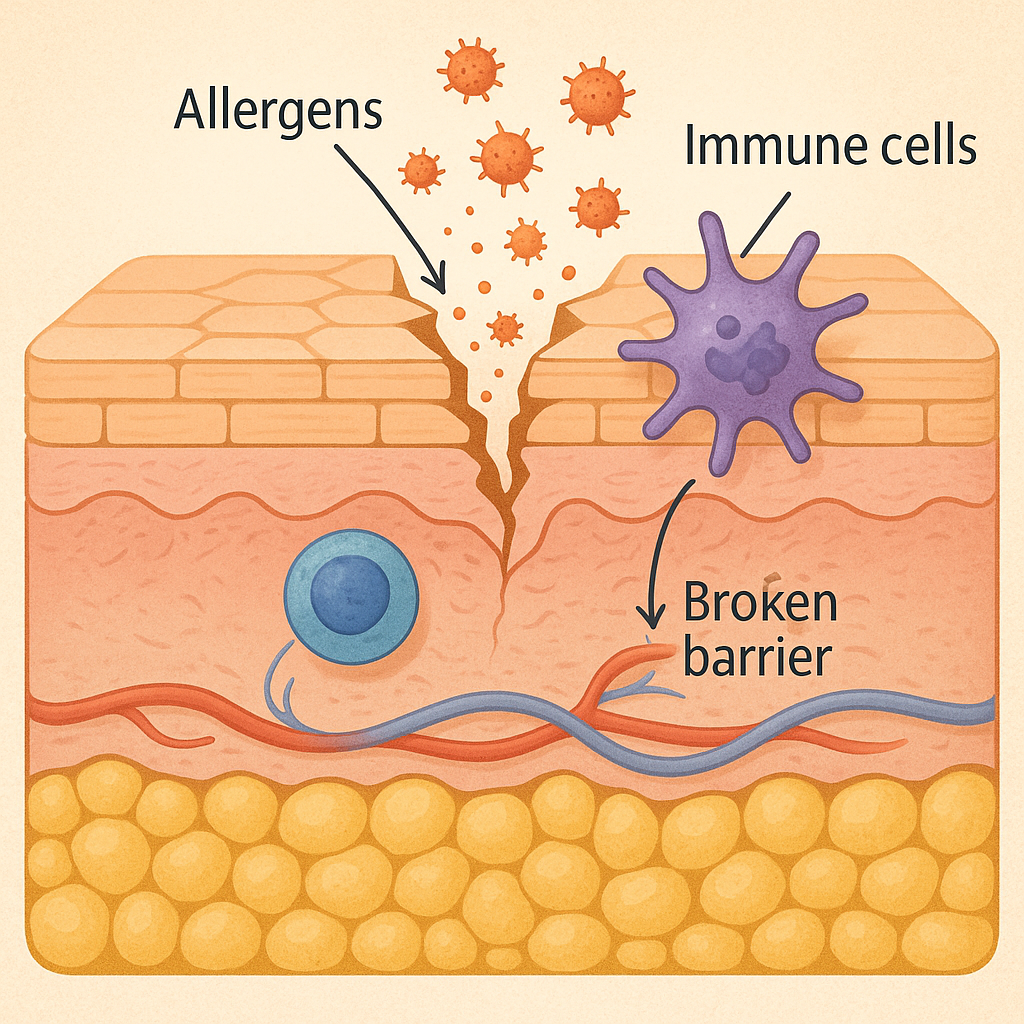
Long-term canine atopic dermatitis management starts with understanding the condition’s underlying mechanisms, not just treating flare-ups as they arise.
Genetic Predisposition and Immune Response
Atopic dogs are born with a skewed immune response, often producing exaggerated levels of IgE antibodies when exposed to otherwise harmless environmental allergens. This hyperactive immune response leads to the classic symptoms of inflammation, itching, and chronic infections (OUCI).
The Role of the Skin Barrier
Dogs with cAD also have a defective skin barrier, which allows allergens, bacteria, and yeast to penetrate more easily. This weak barrier further amplifies immune overreaction. Strengthening this barrier is foundational to sustainable canine atopic dermatitis management, as emphasized in recent dermatology reviews (PMC).
Early diagnosis and barrier support can delay disease progression and reduce medication reliance later on.
2. Topical Barrier Repair Is Foundational
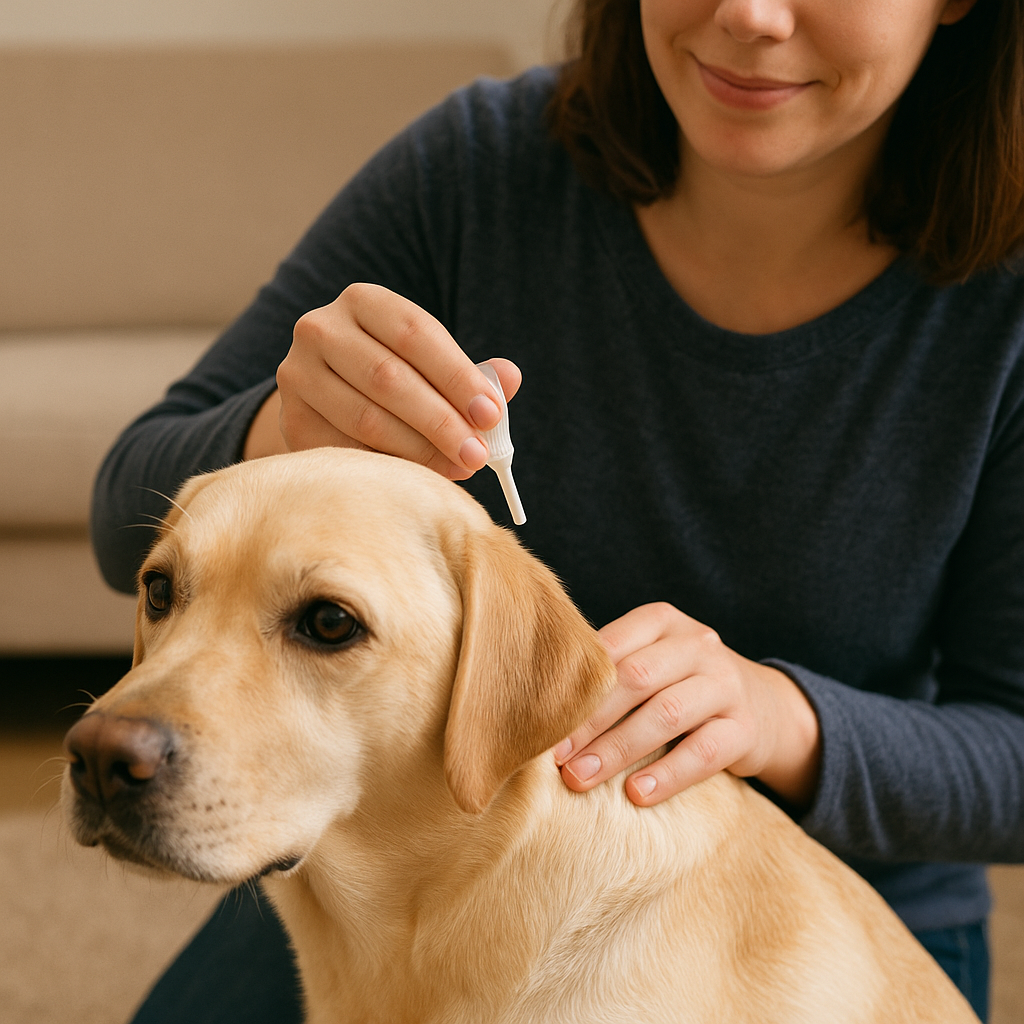
One of the most important and underrated elements of canine atopic dermatitis management is restoring and maintaining the skin barrier. In practice, I’ve seen significant improvements when owners commit to regular topical therapy even in dogs with moderate disease.
Lipid Spot-Ons and Bathing Protocols
Veterinary lipid complexes like ceramides, cholesterol, and free fatty acids help replenish damaged skin. These are available in spot-on form or as part of therapeutic shampoos and sprays. Products combining sphingomyelin and hyaluronic acid can further hydrate and reduce skin microbial load (PMC).
Bathing should start with medicated shampoos (e.g., chlorhexidine + miconazole) twice weekly during flares. Once under control, switch to weekly non-irritating, unscented shampoos to maintain skin health and remove allergens.
Choosing the Right Shampoo
Avoid shampoos with perfumes, essential oils, or dyes. Look for hypoallergenic, pH-balanced formulas with proven actives. In my clinic, I often recommend rotating between a lipid-replenishing formula and an antimicrobial one for optimal canine atopic dermatitis management.
3. Tackle Bacterial and Yeast Overgrowth

Secondary infections from bacteria and yeast are frequent complications in cAD, often worsening itch and delaying healing. Addressing these microbes is a vital part of effective canine atopic dermatitis management.
Cytology and Targeted Antimicrobials
Skin cytology performed in-clinic using tape impressions or swabs helps identify whether Staphylococcus pseudintermedius or Malassezia pachydermatis are present. Treating based on cytology results, not just clinical appearance, ensures the most effective antimicrobial is chosen (PMC).
Short courses of oral or topical antibiotics/antifungals may be needed during flare-ups. Avoid repeated blind courses to reduce resistance risks.
Combo Therapy: Shampoo + Lipids
Studies show that combining antimicrobial shampoos (chlorhexidine + azole) with lipid-rich topicals reduces relapse risk and helps maintain barrier health (PMC). In my patients, this integrated approach dramatically reduces recurrence rates and improves coat condition over time.
Routine microbial control is not optional; it’s core to any comprehensive canine atopic dermatitis management plan.
4. Proactive Topical Anti‑Inflammatory Therapy
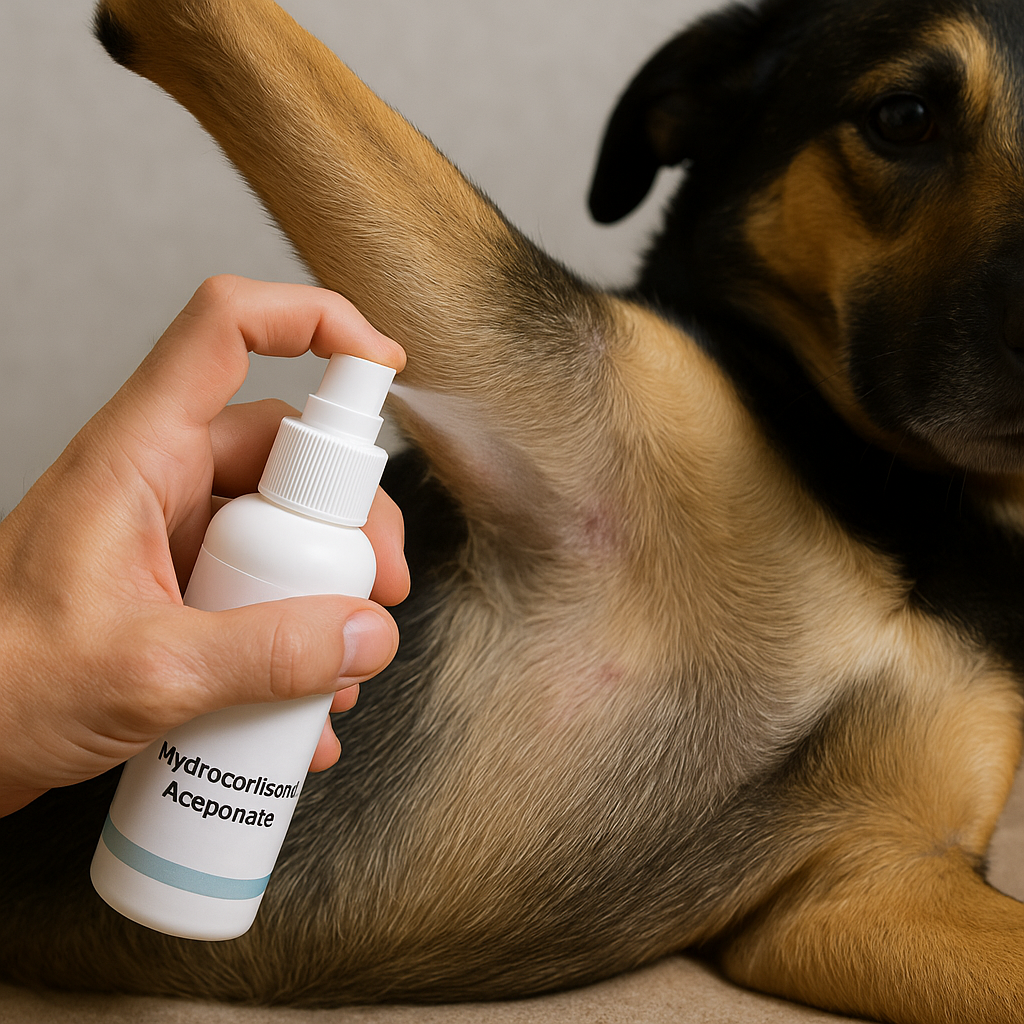
Rather than waiting for flare-ups, a proactive approach using mild topical corticosteroids has been shown to extend remission periods. This is a game-changer in canine atopic dermatitis management.
Hydrocortisone Aceponate: Safe for Long-Term Use?
Hydrocortisone aceponate 0.0584% spray (e.g., Cortavance®) offers targeted relief with minimal systemic absorption. In one study, twice-weekly use of this spray on previously affected areas significantly delayed flare recurrence and reduced the need for systemic medications.
I’ve used this protocol in dozens of cases where dogs were previously dependent on oral steroids or Apoquel. The spray offers relief without compromising long-term safety when applied as directed.
Owners love that it’s fast-drying, non-greasy, and easy to apply, making it one of the most user-friendly tools in long-term canine atopic dermatitis management.
5. Smart Use of Systemic Medications
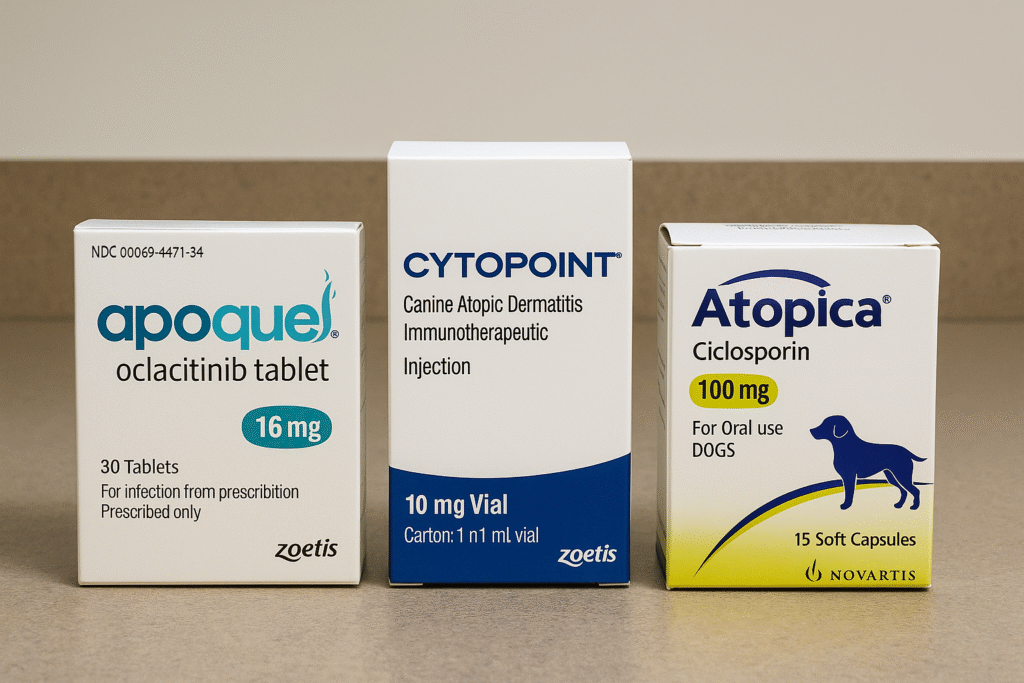
For moderate to severe cases, systemic medications are often necessary to control inflammation and pruritus. However, the goal in canine atopic dermatitis management is to use these strategically, balancing efficacy with long-term safety.
Oral Steroids: Risks and Limitations
Short-term glucocorticoids (like prednisone) can be highly effective during acute flares. But prolonged use increases the risk of side effects like increased thirst, weight gain, behavioural changes, and even immune suppression. Current guidelines suggest tapering doses quickly and using only for flare control, not long-term maintenance.
Apoquel, Cytopoint, and Ciclosporin Compared
- Oclacitinib (Apoquel®): A JAK1 inhibitor that reduces itch and inflammation rapidly, often within 4–6 hours. It’s commonly used for daily maintenance in dogs over 12 months. While well-tolerated short term, ongoing research is evaluating its long-term safety.
- Lokivetmab (Cytopoint®): A monoclonal antibody targeting IL-31, it offers itch relief lasting 4–8 weeks per injection with minimal systemic side effects. Especially useful for dogs with other health issues or owners preferring fewer meds
- Ciclosporin (Atopica): An immunosuppressant that’s highly effective but slower to act, taking 4–6 weeks to reach full benefit. Combining with a steroid short term can jumpstart response (BMC Veterinary Research).
Each case is unique, and the best long-term canine atopic dermatitis management often involves rotating or combining these tools under veterinary supervision.
6. Immunotherapy (ASIT): Target the Root Cause

Allergen-specific immunotherapy (ASIT) remains the only treatment that modifies the disease itself, rather than simply managing symptoms. When done properly, it can reduce the need for medications and offer long-term stability in canine atopic dermatitis management.
Injection vs. Sublingual
ASIT can be delivered as subcutaneous injections (SCIT) or sublingual drops (SLIT), depending on owner’s comfort and the dog’s temperament. Both methods expose the immune system to small, controlled amounts of allergens to build tolerance over time.
It typically takes 6 to 12 months to assess full effectiveness, and commitment is key. In a 2022 study, 6 out of 7 dogs showed reduced itch, improved immune regulation (IL-13 and TNF-α), and fewer flare-ups after ASIT.
Success Rates and Limitations
Roughly 60–75% of dogs respond positively to immunotherapy, especially when started early. It’s most effective when environmental allergens (e.g., dust mites, pollen) are the primary triggers. Food allergy-related dermatitis is not addressed by ASIT.
In clinical practice, I recommend ASIT for owners who are committed to long-term canine atopic dermatitis management and wish to reduce dependence on lifelong medications.
7. Support from Within: Diet & Supplements
What your dog eats can significantly influence skin health and inflammation levels. While not a cure, nutritional support plays an essential adjunct role in canine atopic dermatitis management.
Omega Fatty Acids and Vitamins
Supplementing omega-3 and omega-6 fatty acids in the right ratio (typically 5:1 to 10:1) has been shown to reduce inflammation and even lower the need for medications like Apoquel. EPA and DHA found in fish oil help stabilize cell membranes and reduce skin hypersensitivity.
Vitamins A and E also support barrier integrity and skin regeneration. Many veterinary therapeutic diets include these at ideal levels, but supplements can be added if needed.
Role of the Gut Microbiome (Emerging Research)
While still an evolving area, there’s growing interest in how gut health may influence immune function in allergic dogs. Probiotics and diets rich in prebiotic fibre may eventually become part of standard canine atopic dermatitis management, though more studies are needed.
In my clinic, I recommend starting with omega-3 supplements and tracking response over 8–12 weeks, while also reviewing the current diet’s nutrient profile.
Daily Home Checklist: 5-Minute Routine
Consistency is what transforms short-term control into long-term canine atopic dermatitis management. This 5-minute daily routine helps prevent flares and keeps your dog comfortable between vet visits.
| Task | What to Do | Frequency |
|---|---|---|
| Visual Check | Examine ears, paws, belly, and armpits for redness, licking, or scabs | Daily |
| Spot Treatment | Apply hydrocortisone aceponate spray to known trouble zones | 2–3x/week |
| Paw Wipe | Use hypoallergenic wipes after walks to remove pollen/allergens | Every outing |
| Brush & Inspect | Remove debris and dead hair; check skin health | 3–4x/week |
| Supplements | Give omega-3/6 fatty acids (capsule or chews) with food | Daily |
This checklist empowers pet owners to participate meaningfully in canine atopic dermatitis management, reducing flare risk and improving quality of life.
Average Cost of Long‑Term Treatment in Canada (2025)
Understanding the financial aspect of canine atopic dermatitis management helps owners plan realistically and prioritize essential therapies.
| Treatment Element | Estimated Monthly Cost (CAD) | Notes |
|---|---|---|
| Lipid-rich topicals (spot-ons/sprays) | $40–$60 | Depends on the product & dog size |
| Medicated shampoos | $20–$35 | Used weekly or biweekly |
| Apoquel or Cytopoint | $90–$150 | Varies with weight & drug |
| Omega-3/6 supplements | $25–$40 | Capsules or liquid form |
| Allergen-specific immunotherapy (ASIT) | $70–$100 | After initial testing (~$400–$600) |
| Routine vet checkups & cytology | $75–$150 every 3–6 months | Essential for tailoring treatment |
In my Ottawa practice, most owners spend $100–$250/month, depending on the dog’s severity and the selected treatment strategy. Working closely with your vet ensures cost-effective, optimized canine atopic dermatitis management.
Prevention Tips and Breeder Advice
Preventing canine atopic dermatitis isn’t always possible due to the genetic nature of the disease, but thoughtful planning, early intervention, and environmental awareness can significantly delay its onset or reduce symptom severity over your dog’s lifetime.
Know Your Dog’s Genetic Risk
Atopic dermatitis is strongly hereditary. According to a TIME report, if both parents are affected, their offspring may have up to a 65% chance of developing the condition. This makes it essential to:
- Ask breeders about the skin health history in both parent dogs.
- Request written veterinary records or health testing documentation.
- Avoid breeders who dismiss skin issues as “seasonal” or “normal.”
Some breeds, including Westies, Labs, French Bulldogs, and German Shepherds, are at higher baseline risk, so transparency from the breeder is crucial for long-term canine atopic dermatitis management.
Begin Early Monitoring
Don’t wait for obvious symptoms. Subtle signs like occasional paw licking, frequent ear scratching, or mild seasonal redness may signal the beginning of cAD. The earlier the intervention, the better the long-term outcome.
Veterinarians often recommend:
- Early use of hypoallergenic diets in high-risk puppies
- Regular bathing with gentle, unscented shampoos to remove allergens
- Moisturizing sprays or wipes to maintain skin hydration
Proactive canine atopic dermatitis management may delay the need for medications and prevent progression to severe disease.
Allergen-Reducing Lifestyle Tips
Environmental allergens pollen, dust mites, and mould, are major triggers. Here are practical prevention strategies:
- Vacuum floors and upholstery 2–3 times per week using HEPA filters
- Wash dog bedding weekly in hot water (60°C+) to kill dust mites
- Use air purifiers in sleeping areas, especially during peak allergy seasons
- Wipe paws after outdoor walks with hypoallergenic pet wipes
- Bathe weekly using veterinary-approved, fragrance-free shampoos
- Minimize indoor pollutants like scented candles, smoking, or strong cleaning agents
These small but consistent changes form the foundation of home-based canine atopic dermatitis management and can reduce flare-ups dramatically.
Choose the Right Topicals from the Start
Even before symptoms appear, using lipid-replenishing spot-ons and skin barrier sprays can strengthen the epidermal layer. Dogs with subclinical skin dysfunction (especially in predisposed breeds) benefit from early skin barrier support.
In my clinical experience, puppies raised with weekly baths and barrier therapy, especially those with atopic parents, often experience fewer and less intense episodes later in life.
FAQs About Canine Atopic Dermatitis
❓ Can my dog be cured of atopic dermatitis?
No, atopic dermatitis is a lifelong condition, but with consistent canine atopic dermatitis management, most dogs can live comfortably with minimal symptoms.
❓ Is Apoquel safe for long-term use?
Generally, yes. Many dogs tolerate Apoquel well for years, but regular monitoring is recommended, as long-term safety is still being studied
❓ How do I know if my dog has a secondary skin infection?
If your dog’s itch suddenly worsens, or you see pustules, greasy skin, or a foul odour, it’s time to visit the vet. A simple cytology can guide targeted treatment.
❓ Can food allergies cause similar symptoms?
Yes. Food allergies can mimic or coexist with atopic dermatitis. An elimination diet trial is the gold standard for diagnosis.
❓ How soon should I consider immunotherapy?
The sooner the better, especially if your dog’s symptoms are year-round. ASIT is most effective when started early in your canine’s atopic dermatitis management plan.
Final Thoughts: Building a Long-Term Management Plan
Effective canine atopic dermatitis management in 2025 is no longer just about treating flare-ups it’s about creating a sustainable, science-based strategy tailored to your dog.
In my clinical experience, the dogs who thrive long-term are those with committed owners, proactive veterinary partnerships, and a clear treatment blueprint that evolves.
Your dog’s plan might include:
- Rapid flare control with medications like Apoquel or short-term steroids
- Barrier repair through weekly bathing and lipid-rich topicals
- Proactive anti-inflammatory spray application (e.g., hydrocortisone aceponate)
- Scheduled Lokivetmab injections for monthly stability
- Immunotherapy for long-term immune modulation
- Daily omega fatty acid supplements to reduce inflammation
Keep in mind: this is a marathon, not a sprint. With consistent effort, informed decisions, and compassionate care, canine atopic dermatitis management becomes not only doable, but deeply rewarding.

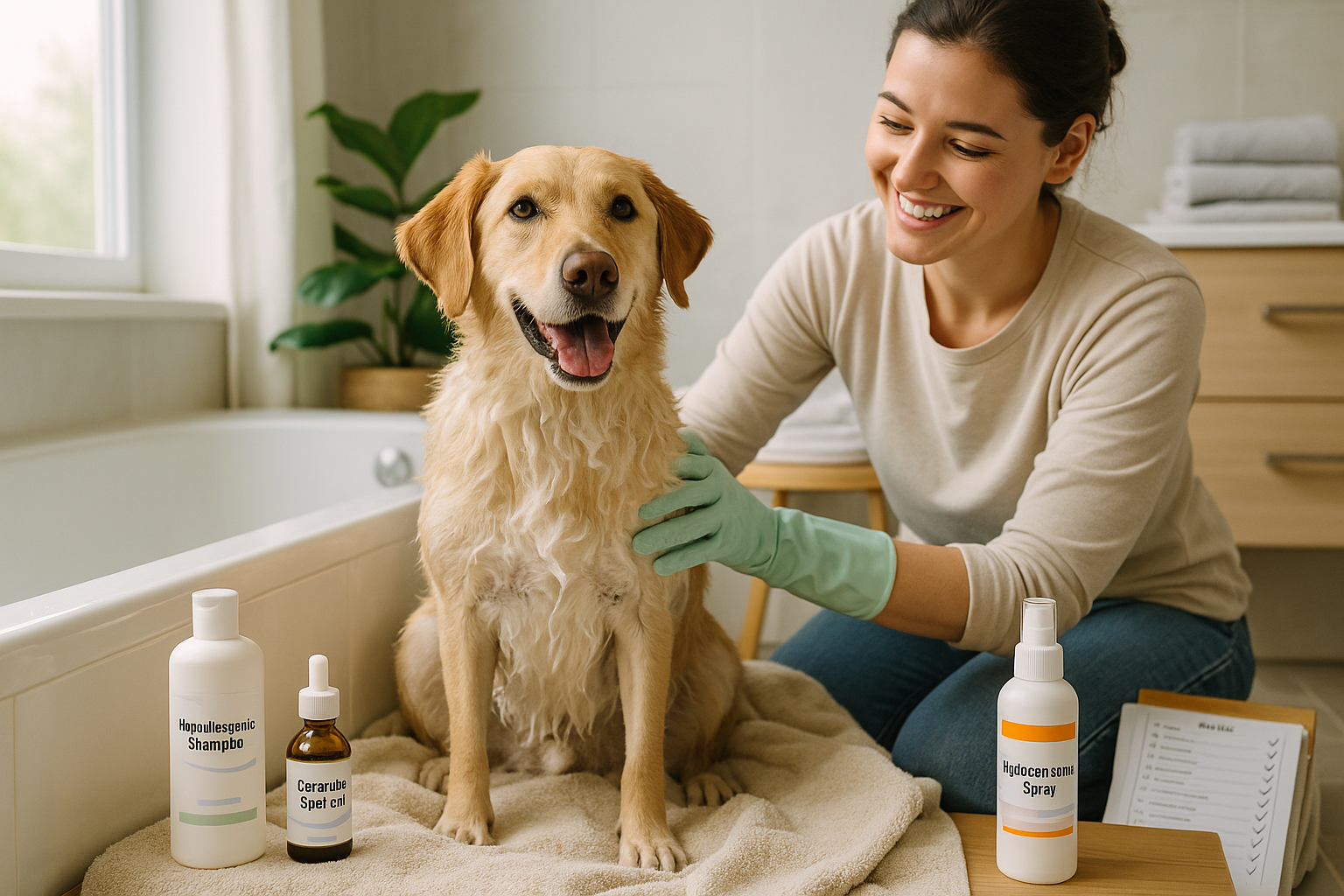


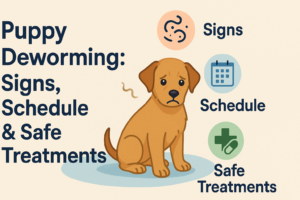
Pingback: Cushing’s Disease in Dogs (2025): Proven Treatments, Signs & Costs”